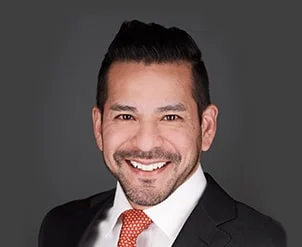Special Issues in an Illinois Grey Bankruptcy

The overall bankruptcy filing rate has declined significantly since the 1990s. However, mostly because of a shrinking safety net, the over-55 bankruptcy filing rate has tripled since 1991. Rising medical care costs have fueled much of this increase. Even if the debtor has health insurance, it usually only pays 80 percent of the total. 20 percent of a cancer treatment bill, or other serious medical condition bill, is a lot of money.
The same bankruptcy rules apply to all filers, regardless of age, gender, or anything else. But just as older people often have different health needs than younger people, they often have different bankruptcy needs as well. A good Chicago bankruptcy lawyer understands these differences and tailors the approach to the case accordingly.
Protecting Assets
Retirement accounts and home equity are usually the largest two assets in an Illinois grey bankruptcy. These items are also exempt under state law.
Frequently, retirement accounts have a substantial dollar value. Their emotional value might be even higher. 401(k)s, IRAs, and other nest egg accounts represent future security and reward for many years of financial sacrifice. When things get tight, many older people are tempted to dip into these accounts in order to meet immediate expenses.
Generally, bankruptcy is a much better option. The United States Supreme Court recently affirmed that these accounts are completely exempt, regardless of their monetary value.
For a variety of reasons, many older adults hesitate to file bankruptcy. However, desperate times call for desperate measures. Bankruptcy is certainly a desperate alternative. But if the other alternative is draining your life savings to placate moneylenders, the choice is clear.
Moreover, most older people have lived in their homes for at least ten years. Therefore, they have substantial equity in their homes. They are understandably afraid to lose it. In most cases, they will not.
The generous home equity exemption in Illinois is only part of the story. Properly listing the home’s bankruptcy value could be the key to retaining home equity.
The Bankruptcy Code requires debtors to use an asset’s as-is cash value in the bankruptcy paperwork. Most home investors initially offer only pennies on the dollar for an as-is home sale. Arguably, that value, as opposed to the fair market value, belongs in Schedule A. This strategy could stretch the home equity exemption even further.
Erasing Liabilities
Thoughtful advocacy skills are essential to protect assets. Good negotiating skills are essential when it comes to erasing liabilities, especially medical bills.
Bankruptcy discharges unsecured debt, such as medical expenses. This debt elimination is a bankruptcy attorney’s ace in the hole during debt negotiations. Medical creditors know that if they do not reach an agreement, the judge will discharge the debt, and the creditor gets nothing.
Since bankruptcy gives debtors the edge in debt negotiations, an attorney can often reduce the obligation, obtain payment deferrals, reduce the interest rate, or obtain other relief.
On a similar note, some people want to retain relationships with some doctors. An unpaid bill will usually end that relationship, bankruptcy or no bankruptcy. Debtors can reaffirm selected debts. They voluntarily keep paying on certain accounts. Generally, the reaffirmation loophole applies to secured debts, such as vehicle payments. But it also could apply to doctor bills and any other obligations the debtor chooses to reaffirm.
Reach Out to Dedicated Lawyers
Bankruptcy is often a good option for distressed older debtors. The rest is up to you. For a free consultation with an experienced Chicago bankruptcy attorney, contact the Bentz Holguin Law Firm, LLC. Convenient payment plans are available.
Resource:
wsj.com/articles/bankruptcy-filings-surge-among-older-americans-1533641401


